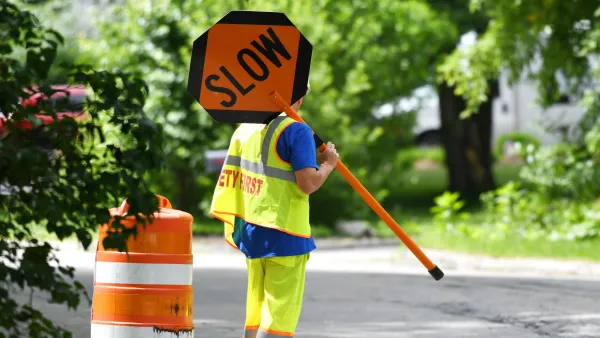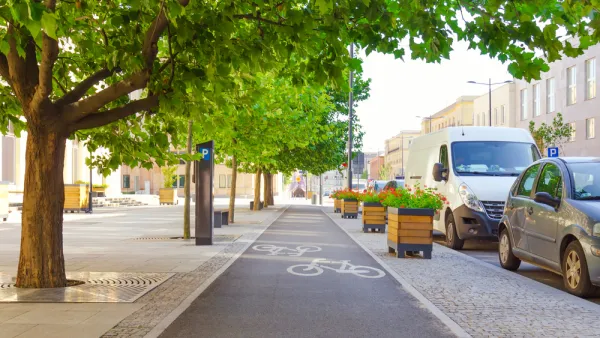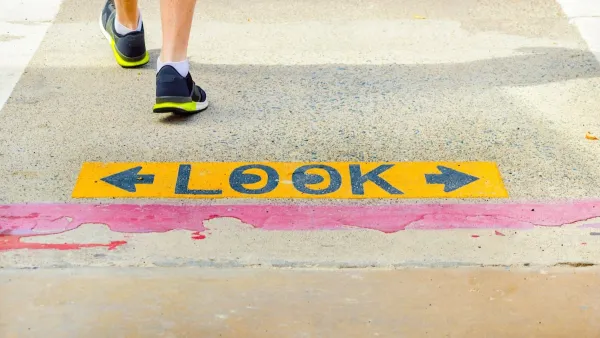Two safe streets advocates give their recommendations for how to effectively use the $1 billion in annual funding available through a federal grant program.

Writing in Streetsblog, Melissa Balmer and Leah Shahum outline some ideas for how cities can effectively put to use the annual $1 billion dedicated to Vision Zero projects through the Safe Streets and Roads for All (SS4A) grant program.
The authors outline the basics of the program: who can apply, due dates, and what kind of projects qualify. Encouragingly, they write, “This is a mercifully streamlined application process, so don’t be daunted! While a 20 percent match is required, there are creative ways to fulfill that requirement.”
Balmer and Shahum suggest ways that communities can use these grants. First and foremost, it’s important to develop a “strong and equitable” Vision Zero plan that “can help your community institutionalize Vision Zero, setting explicit timelines, deliverables, and accountability measures.”
Second, the authors write, “Think Big, Bold & System-Wide for Implementation Projects.” The federal funding can support infrastructure projects that put action plans into literal action, such as “widespread, high-impact, cost-effective design treatments” such as speed humps, improved crosswalks, and other traffic calming measures.
Thirdly, the authors highlight a number of projects that would qualify for supplemental planning grants, such as racial and health equity plans for roadway safety work, reforming traffic enforcement with a focus on safety without over-criminalization, and education on Safe System principles.
FULL STORY: OPINION: How To Use the Money Available for Safe Streets

National Parks Layoffs Will Cause Communities to Lose Billions
Thousands of essential park workers were laid off this week, just before the busy spring break season.

Retro-silient?: America’s First “Eco-burb,” The Woodlands Turns 50
A master-planned community north of Houston offers lessons on green infrastructure and resilient design, but falls short of its founder’s lofty affordability and walkability goals.

Delivering for America Plan Will Downgrade Mail Service in at Least 49.5 Percent of Zip Codes
Republican and Democrat lawmakers criticize the plan for its disproportionate negative impact on rural communities.

Test News Post 1
This is a summary

Test News Headline 46
Test for the image on the front page.

Balancing Bombs and Butterflies: How the National Guard Protects a Rare Species
The National Guard at Fort Indiantown Gap uses GIS technology and land management strategies to balance military training with conservation efforts, ensuring the survival of the rare eastern regal fritillary butterfly.
Urban Design for Planners 1: Software Tools
This six-course series explores essential urban design concepts using open source software and equips planners with the tools they need to participate fully in the urban design process.
Planning for Universal Design
Learn the tools for implementing Universal Design in planning regulations.
EMC Planning Group, Inc.
Planetizen
Planetizen
Mpact (formerly Rail~Volution)
Great Falls Development Authority, Inc.
HUDs Office of Policy Development and Research
NYU Wagner Graduate School of Public Service





























